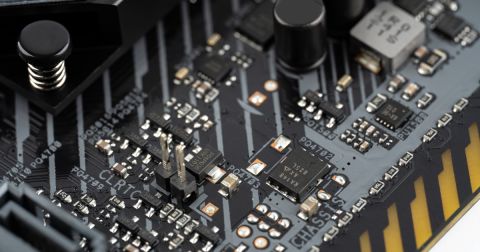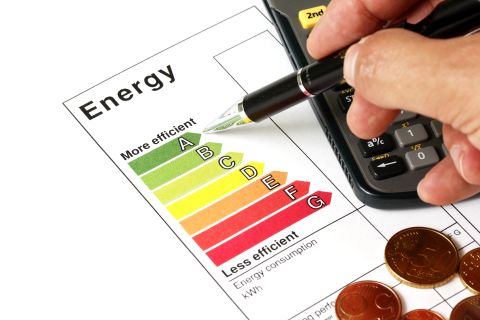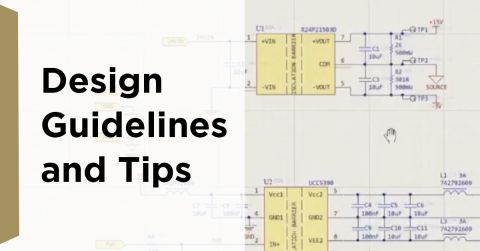Resistor Power Derating to Improve Mean Time Between Failure

By design, resistors limit the current flow, absorbing electrical energy and converting it to thermal energy. All resistors have a specified power rating that determines the maximum energy that the component can convert without degrading performance or the component failing.
The maximum power rating of a resistor will depend on the materials used in its construction, its physical dimensions, and the maximum temperature that the component can safely operate at. The maximum temperature will depend on the ambient temperature around the component and the dissipated heat extracted from the component into the environment. The latter will depend on the thermal management measures that the designer has implemented for the component and the rest of the circuit in terms of PCB layout, heat sinks, airflow, and any other cooling mechanisms that may be present.
When working out the resistive component’s required power rating, the nature of any changing voltages across the resistor needs to be considered. Pulsed loads with an average voltage of VL will not cause the same thermal effects as a steady-state voltage of the magnitude that also equals VL. The actual difference will depend on the composition of the resistor. Wire wound resistors are more tolerant of pulsed loads than film resistors. A pulsed load generates an overload condition dependent upon factors that include the mean power in the pulse train, the repetition frequency, and the rise time. The overload condition needs to be factored into the required power rating calculation to generate an accurate result. The simplest method is to treat the pulsed energy as equivalent steady-state energy by calculating the mean power for the pulse train and adjusting for the type of resistor required and the pulses’ properties. This can either be done using available equations to calculate the exact overload condition factor or use engineering judgment to select a worst-case multiplier.
One thing to bear in mind is that any component’s resistance will vary with temperature, depending on the materials used to construct the resistor. This change is specified as the temperature coefficient of resistance (TCR) for the component. Expressed in ppm/°C (parts per million per degree centigrade), it represents the percentage change in resistance for each degree change in temperature. Resistors manufactured using metallic materials generally have a positive temperature coefficient, meaning their resistance increases as the temperature increases. Conversely, resistors manufactured using semiconductor materials generally have a negative temperature coefficient, meaning their resistance decreases as the temperature increases. Careful selection of materials can allow the manufacture of resistors with a neutral temperature coefficient, meaning their resistance does not change with temperature. This is ideal for producing precision resistors, but the metal alloys required for their construction can make them expensive.
Derating resistors is a design technique where a component is deliberately operated at voltages significantly lower than the maximum rated voltage. This reduces the peak temperatures that can be generated within the component. This benefits the rate of degradation of the materials used to construct the component is reduced. This results in an increased reliability and life expectancy for the component. Most resistor manufacturers specify their power rating at a temperature of 70°C in an environment with free airflow. Suppose a component is located within a device with no free airflow and no other cooling mechanisms. In that case, a thermal analysis will be necessary to determine the actual maximum power rating that should be applied. Suppose a component is located within a device where additional cooling is provided. In that case, theoretically, the component can be safely operated above the maximum power rating, assuming that the heat generated within the resistor is dissipated at a greater rate than for the free airflow condition.
Resistor datasheets typically provide derating values where the operating temperature will exceed the standard 70°C. These are provided as a percentage applied to the component power rating to calculate the operating power rating. This is also known as the resistor’s stress ratio, calculated from the maximum operating power ratio to the manufacturer’s rated power. The general rule of thumb is to adopt a stress ratio of 0.8 for a typical circuit design. However, manufacturers’ data sheets may offer recommended stress ratio figures for a range of typical operating and design conditions.
Another advantage to derating resistors is that it increases the safety margin between component limits and the real-world applied stresses that may be unforeseen in the design process. This includes variations in power supply levels leading to higher than expected voltages being seen across the resistor. Or it could be higher than expected operating temperatures due to external environmental conditions or internal thermal management challenges. Where derating is not possible, alternate options include connecting resistors in parallel to share the electrical energy absorption or introducing active cooling mechanisms to the device. If you need to use a higher-rated resistor, you’ll need to consider that it will be physically larger than the component you planned to use. The increased mass and size of the component will affect the board layout and increase the component’s susceptibility and connections to damage from mechanical vibrations.
Would you like to learn more about how Altium Designer® can help you with your next PCB design? Talk to an expert at Altium.









